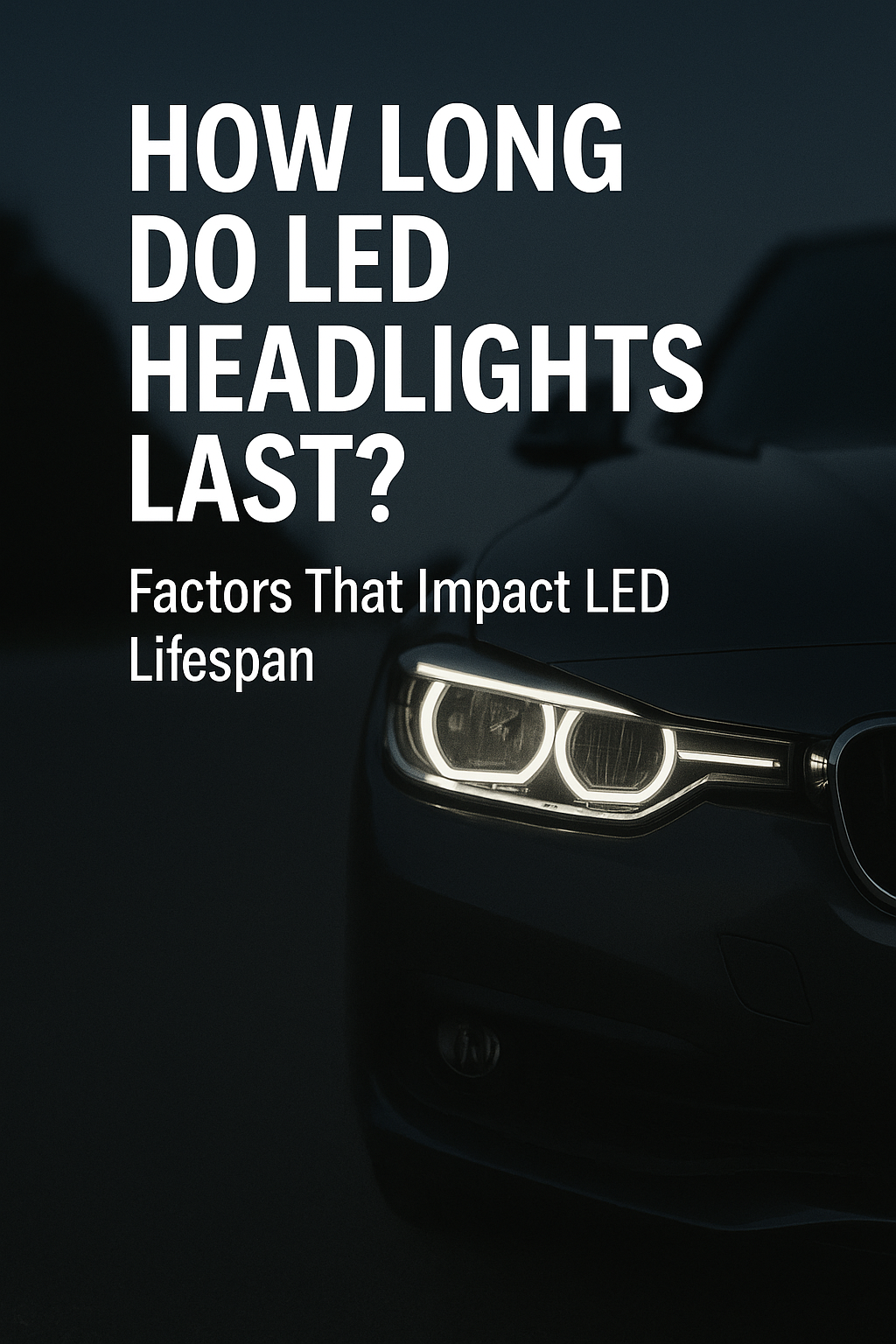When you're considering upgrading your car's lighting system or replacing existing headlights, knowing how long they'll last helps you make a smart investment and avoid frequent replacements. So, how long do LED headlights last?
LED headlights typically last between 30,000 to 50,000 hours of use, which translates to roughly 10-15 years for most drivers.
While this lifespan is impressive, it's important to keep reading because several factors can significantly impact the actual longevity of your LED lighting - from the quality of the manufacturer to your driving conditions and maintenance habits - and understanding these can help you maximize your investment.
Factors That Affect LED Headlight Lifespan
The longevity of LED headlights largely depends on the quality of their components and how they're used. Premium manufacturers typically use better materials and more robust heat management systems, which can significantly extend the life of the lights. In contrast, cheaper alternatives might save money upfront but often fail much sooner than their premium counterparts.
Environmental conditions also play a crucial role. Extreme temperatures, particularly heat, can strain LED components. Vehicles frequently driven in hot climates or used for extended periods might experience shorter LED lifespans. Additionally, excessive vibration from rough roads can impact the internal connections of LED headlights over time.
How Do LED Headlights Compare To Traditional Halogen Bulbs?
Traditional halogen bulbs typically last only 500 to 1,000 hours, making them significantly shorter-lived than LED headlights. This means that during the time one set of LED headlights continues working, you might need to replace halogen bulbs 30-50 times.
The dramatic difference in lifespan makes LEDs more cost-effective in the long run, despite their higher initial cost. When you factor in the cost of replacement bulbs and labor over several years, LED headlights often prove to be the more economical choice.
How Can You Extend The Life Of Your LED Headlights?
Regular maintenance can help ensure your LED headlights reach their maximum potential lifespan. Keep the headlight assemblies clean and check regularly for moisture buildup, which can damage the electrical components over time.
Ensure your car's electrical system is functioning properly, as voltage fluctuations can stress LED components. If you notice any dimming or flickering, have your vehicle's electrical system checked promptly to prevent potential damage to the LED headlights.
It's also worth noting that quality installation is crucial. Having LED headlights professionally installed can prevent many common issues that lead to premature failure, such as poor connections or improper heat management.
What Are The Warning Signs Of LED Headlight Failure?
Unlike traditional halogen bulbs that simply burn out all at once, LED headlights typically show gradual signs of deterioration. One of the most common indicators is diminishing brightness over time. If you notice your headlights aren't illuminating the road as well as they used to, this could be a sign they're beginning to fail.
Other warning signs include flickering, inconsistent lighting patterns, or only portions of the LED array working. Some LED headlights may also show color changes, such as becoming more yellow or developing dark spots. If you notice any of these symptoms, it's best to have your headlights inspected by a professional.
Is It Worth Upgrading To LED Headlights?
The decision to upgrade to LED headlights involves weighing several factors. The primary benefits include superior brightness, better energy efficiency, and the significantly longer lifespan compared to traditional bulbs. LED headlights also provide better visibility with their whiter, more focused light output.
However, the initial cost can be substantial, often ranging from $100 to $500 or more for a quality set. The upgrade might also require additional modifications to your vehicle's electrical system, adding to the overall cost. Despite these upfront expenses, many drivers find the investment worthwhile due to the improved safety, reduced maintenance needs, and long-term cost savings.
Before making the switch, it's important to check your local regulations, as some jurisdictions have specific requirements for headlight modifications. Additionally, ensure that any LED headlights you consider are compatible with your vehicle's make and model to avoid installation issues or poor performance.
Taking The Next Step
Now that you understand the long-term value and performance factors of LED headlights, take time to research specific brands and models that are compatible with your vehicle. Focus on reviews from verified purchasers and look specifically for comments about longevity and performance in weather conditions similar to your area, as this will help ensure you make the best investment for your specific situation.


